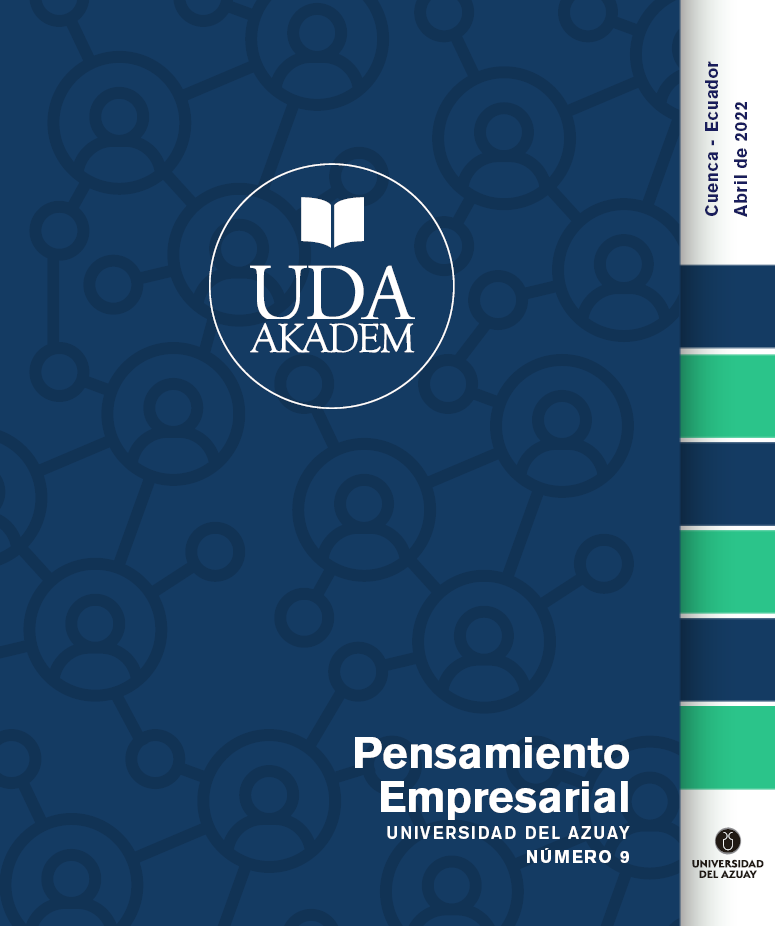Enfoque estadístico-econométrico de la relación entre las Industrias Manufactureras, la Formación Bruta de Capital Fijo y el Producto Interno Bruto ecuatoriano (1970-2015)
Palabras clave:
cambios estructurales, economía ecuatoriana, Formación Bruta de Capital Fijo, industrias manufactureras, Producto Interno BrutoResumen
La investigación tuvo como propósito analizar la existencia de cambios estructurales en la economía ecuatoriana antes y durante la dolarización, a través del aporte de la Formación Bruta de Capital Fijo (FBKF) al Producto Interno Bruto (PIB) y el aporte de la FBKF de las industrias manufactureras a la FBKF total, durante el periodo 1970-2015. La investigación fue descriptiva y correlacional; se realizó una revisión bibliográfica y estadística, además se construyeron tres regresiones para el periodo 1970-2015, dividido en tres etapas económicas; para ello, se utilizó el método de Mínimos Cuadrados Ordinarios (MCO) y los paquetes de software Eviews 10 y Excel. Los resultados demostraron que existe evidencia teórica referente a una relación de crecimiento entre las variables de interés; sin embargo, el aporte de la FBKF de las industrias manufactureras a la FBKF nacional fue reducido y su aporte al PIB no siempre fue positivo durante el periodo 1970-2015; además, existieron dos quiebres estructurales, el primero, se suscitó durante la etapa de
estancamiento económico y, el segundo, al iniciar la dolarización. Se concluye que el crecimiento de largo plazo de Ecuador no estuvo
sustentado en las industrias manufactureras.
Palabras clave: cambios estructurales, economía ecuatoriana, Formación Bruta de Capital Fijo, industrias manufactureras, Producto Interno Bruto.
Abstract
he aim of this research was to analyze the existence of structural changes in Ecuadorian economy before and during dollarization,
through the contribution of Gross Fixed Capital Formation (GFCF) to Gross Domestic Product (GDP) and the contribution of the GFCF
of manufacturing industries to the total GFCF during the 1970-2015 time frame. This research was both descriptive and correlational and a bibliographical and statistical review was carried out. Besides, three regressions for the 1970-2015-time frame were built. These regressions were divided into three financial stages. For this purpose, the Ordinary Least Squares (OLS) method and both the Eviews 10 and Excel packages were used. The results showed that there is theoretical evidence regarding the growth ratio among the variables of interest; however, the contribution to GDP was not always positive during the 1970-2015 time frame. Also, there were two structural breaks. The first one occurred during the economic stagnation stage, and the second one occurred at the beginning of dollarization. It is concluded that Ecuador’s long-term growth was not sustained in manufacturing industries.
Keywords: structural changes, Ecuadorian economy, Gross For- mation of Fixed Capital, manufacturing industries, Gross Domestic Product


